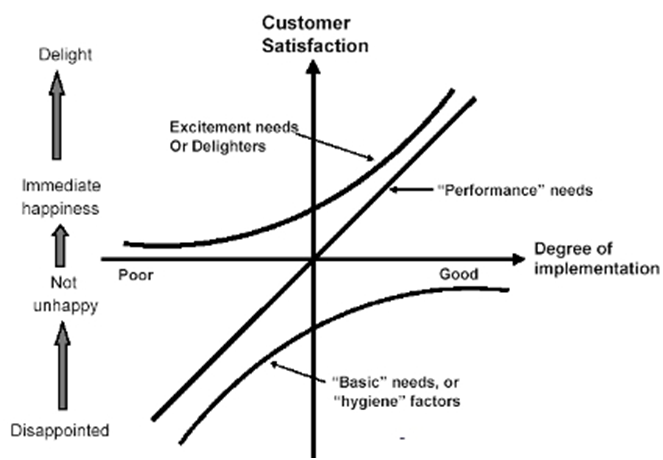Kano Model of Customer Satisfaction: London Underground and National Rail Services
Kano model of Customer Satisfaction was proposed by Kano et al (1996) and it focuses on product attributes on the basis of how they are perceived by customers and their effect on customer satisfaction.
The model distinguishes three types of product attributes that contribute to customer satisfaction in varying degrees: basic attributes, performance or spoken attributes, or surprise or delight attributes.
Kano model of customer satisfaction is not only valid for manufacturing businesses; rather it also equally can be applied to the service sector, including London Underground and National Rail Services.
The basic or expected attributes for London Underground and National Rail services would be to ensure the commute of their customers from one destination to the other. Customers would be highly disappointed when the basic attributes of their services are not ensured, let alone the extremely low level of their satisfaction level if such a situation were to occur.
Performance or spoken attributes of services of London Underground and National Rail Services would be the speed at which customers are taken, to their destination, the level of crowdedness inside the carriages, on platforms and stations in general, the level of customer services customers are offered by staff, and others. The level of performance or spoken attributes of services offered by London Underground and National Rail Services make a huge difference on the customer satisfaction, in a way that the better the performance, the higher customer satisfaction level will be.
Surprise and delight attributes, are the ones that are not generally expected by customers, but if they are present they will make a significant contribution on the level of customer satisfaction. However, the absence of surprise and delight attributes would not dissatisfy customers due to the fact that customers would not be expecting them in the first place. For instance, a surprise or delight attribute for a train company would be offering customers free refreshments during their travel.
London Underground and National Rail Services generally do not have surprise and delight attributes in their services for various reasons. Arguably, the only surprise and delight attribute for the customers of London Underground would be free travel they get on New Year’s Eve. And it will be surprise and delight attribute only for those London Underground customers who are only visiting London, because most of the London and UK residents are aware of free travel on New Year’s Eve, so it is not a surprise for them.
The contributions of each type of attributes to the level of customer satisfaction are best illustrated on the following diagram:

